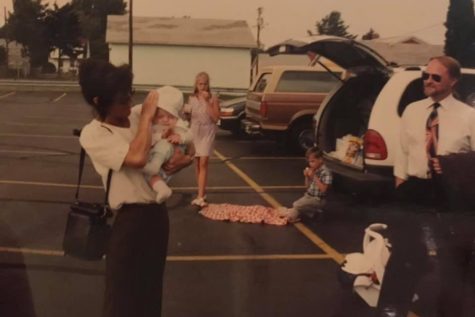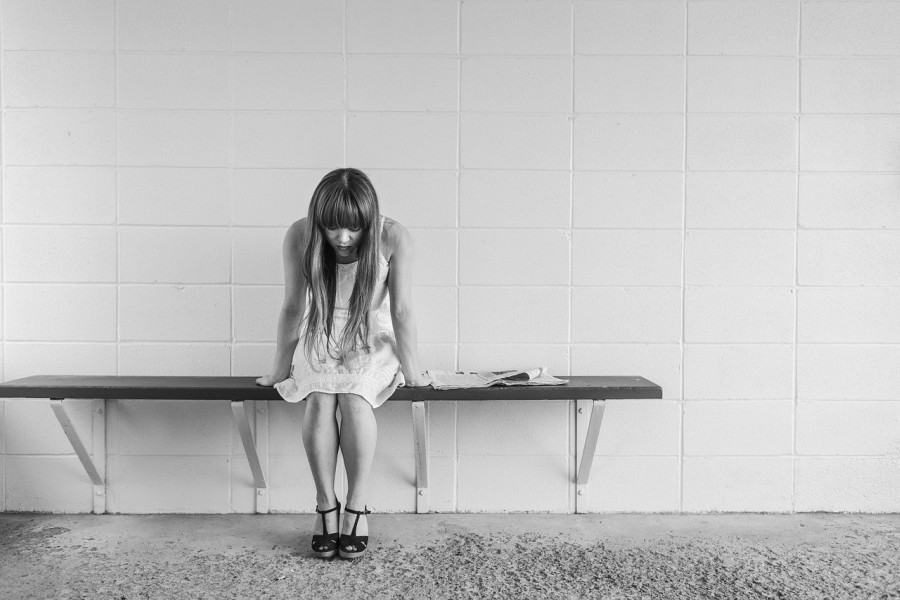Youth suicide rates continue to rise
Students across the country are fighting mental health and suicide.
March 2, 2020
In the U.S. it’s common for teens to turn on the daily news or scroll through social media and see someone who died via suicide. A simple Google search of “suicide news” will lead you into a slew of articles and stories.
Just today alone, on the first page of that exact search was 10 stories in relation to suicide, from 10 different media outlets. It is all around us.
According to data collected by the CDC, one in five teenagers in the U.S. seriously considers suicide annually. In 2003, 8% of adolescents attempted suicide, representing approximately 1 million teenagers, of whom nearly 300,000 received medical attention for their attempt; and approximately 1,700 teenagers died by suicide each year.
It’s a growing problem that schools everywhere are grappling with.
FACTS AND FIGURES
Youth suicide is categorized as affecting young people below the age of 21, and the rates are on the rise in the U.S.
In 2017 suicide was the 10th most common cause of death among Americans, as well as the second leading cause of death among young Americans ages 15 to 24, according to the CDC. Between 2000 and 2007, the suicide rate among youth ages 10 to 24 hovered around 6.8 deaths per 100,000 people. Then, the rate curved upward, reaching a rate of 10.6 deaths per 100,000 by 2017 — a 56-percent increase in less than two decades. Nearly one out of five adolescents had said they “are thinking about suicide,” between 1991 and 2017, according to Lindsey’s study. Among black youth, suicide attempts increased by 73 percent. That huge jump is significant because suicidal attempts are the biggest risk factor linked to dying by suicide.
Whether you see it at your own school or hear about it on the news, it is clear that teens and young adults in today’s age are more suicidal. There are numerous factors leading to suicidal thoughts and tendencies. From having a psychiatric disorder including depression, to problems with alcohol or drugs, physical or medical issues, uncertainty in dealing with sexuality or sexual orientation or exposure to the suicide of a family member or friend. There seems to be so much in the world today that can affect young people and cause depression and anxiety.
The country flipped a switch and we are just now starting to realize what is happening. Perhaps it’s too little too late after losing 47,000 people in the U.S. to suicide in 2019.
FACTORS
Mrs. Kimberly Himes, who taught at B-A from 2006-2015 and now works as a counselor at a private school outside of Washington, D.C., said kids today face enormous stress.
“In today’s world, students are facing increasing pressure – both inside and outside school. Students’ lives are complex; they juggle many concerns, academic and emotional, that significantly impact them,’ she said. “With these concerns, coping skills and support systems are needed so that students at risk – and others – are able to identify their stressors. Research has indicated that depression and substance use – both of which are on the rise – are the most prevalent diagnoses among suicide victims (NIH, 2018). Students today deal with the pressure in a myriad of ways – some healthy, some unhealthy. One particularly healthy way that I see students deal with pressure is by engaging in sports, music, or some other recreational activity. For others, handling pressure may indicate substance abuse or self harm.”
According to Harvard Health Publishing from the Harvard medical school, more than 100 Americans commit suicide everyday. While some people who commit suicide have an identifiable mental health problem, like depression or addiction, others don’t. Some talk about wanting or planning to kill themselves or give other hints, others don’t. The decision to commit suicide might be made just minutes or hours before that act. Every suicide, like every person, is different. Many are sparked by intense feelings of anger, despair, hopelessness, or panic according to Harvard Health.
“Many people never let on what they are feeling or planning. The paradox is that the people who are most intent on committing suicide know that they have to keep their plans to themselves if they are to carry out the act,” says Dr. Miller. “Thus, the people most in need of help may be the toughest to save.”
It is hard to see it coming, even with people you are close to, which raises the question, what can we do?
You have to first start by understanding the signs and risk behaviors of suicide. You also have to realize every suicide situation is different and you can’t save them all. In some cases, sadly, nobody can do anything.
“Students – regardless of demographics, geographical boundaries, or socio-economics – share similarities and differences. Students in all settings handle stressors with healthy and unhealthy choices,” Mrs. Himes said. “Every person has his or her own issues, so it’s important to treat them as individuals with unique backgrounds and circumstances. What helps one student cope may not help another student cope. That’s why it’s imperative that we find ways to bring awareness to suicide prevention and the concurrent issues that impact students. One way to encourage dialogue is to be honest and open in schools and educational settings: asking students and peers questions about how they are feeling and doing, providing them with guidance from trusted adults, and support from outside resources when needed.”
And even then it may not be enough. One Bellwood-Antis grad from the mid-1990s is a case study in that.
NO ONE SAW IT COMING
You might be thinking to yourself not me, it can’t happen here, or why do I care it doesn’t affect me? Here is a quick answer to any of those questions. Bellwood Alumni Nicole Leshok has had an experience some of us can’t even imagine.

Matthew David was never a depressed kid. The family never saw it coming.
“On March 16th, it will be 22 years since my brother, Matt David committed suicide,” said Nicole.
Matt David committed suicide at the age of 17. Nicole, a Bellwood graduate of 1994, was just 22 years old when her life would change forever.
“How has suicide changed my life? I’m not sure I could ever quite put that into words. I was 22 years old with my whole life ahead of me when my little brother decided to end his. Everything changed,” she said. “The world as I knew it was shattered. It’s always hard when we lose someone we love, I get that. But it is a whole different kind of hurt when no one can tell you that this was part of God’s plan. It wasn’t. It was a stupid mistake on my brother’s part. It was a split second decision that changed the course of all of our lives… forever.”
Nicole and her family struggled for years after the incident. Nicole was very close with her brother and blamed herself, questioned what all families of suicide victims question: why?
“I mean, my brother and I were extremely close, so how didn’t I see this coming? How didn’t know he was struggling?” Nicole asked. “If I wouldn’t have moved out, if I would have just been there that day, if I just would’ve bought those damn Steve Miller Band tickets when he begged me to take him to that concert, maybe if he had something to look forward to? Maybe just maybe if I just would’ve known, if I just would’ve done ANYTHING.”
Nicole’s family was grief stricken by Matt’s suicide. Everyone was affected by Matts decision to take his own life. Suicide doesn’t just affect the person committing it, but the entire community and family around the victim.

Nicole and her family were devastated by Matts suicide. Everyone was grief stricken.
“I suffered for years. We all suffered in our own hell. My dad found him and had to cut him down, an image that I’m certain still haunts him every waking second,” Nicole recounted. “He still can’t catch his breath when someone mentions Matthew. My mother couldn’t take the guilt and she woke up every day with the intention of drinking until she one day no longer woke up. She finally succeeded on September 9, 2001 when she joined our brother. You see, people don’t often talk about guilt but it crushes each and every one of us.,” said Nicole.
Suicide is prevalent more than ever in this world. The rate keeps going up, and the world isn’t changing. Nicole’s story reaches into the local heart of Bellwood-Antis and Blair county. Suicide is closer to you than you think and we need to step up. Nicole 22 years later still feels the pain of losing her brother and mother.
“On March 3rd we will celebrate what would have been his 39th birthday. It will be the 22nd time we’ve had to face his birthday without him and on March 16th we will try to make sense out of all of it again. But we never will. I share his story, our story even though it’s still so hard to choke out the words, it still rips my heart out but I do it because if one person who is reading this believes that no one would care if they chose to leave, I promise you, you are very wrong. I would give anything to have my brother back. We all would. To just be able to have known he was struggling and needed us, anything,” said Nicole.
Nicole lives a “normal” life now. She is happy and married with children. Her family is doing well also.
“I have a pretty amazing life now. I am married to an amazing man, we have 5 beautiful children between us, my dad is good, my sister is good,” she said. “We have our family and our friends, life is good. But at any given moment we can be reminded of who we are missing and all the pain comes rushing back. It’s a wound that never heals. There will never be any closure or reason why.”
Knowing the risk factors isn’t enough. Knowing someone isn’t enough. In Matt’s case he was a normal teen with friends and family all around him. Matt was a classic Bellwood student. He played sports and was loved by everyone.
“My brother was never a depressed kid. He was happy and had lots of friends. His suicide shocked the whole community. No one saw it coming,” Nicole said. “No one had any idea. Matt never talked about suicide, he never once said he wanted to die. He played on the football team. He stood up for kids that were being bullied. His death shocked everyone. He didn’t leave a note explaining why, what he was thinking. We were left with nothing. NOTHING. For years we went over it all trying to find some type of answers. There never will be for our family. The only thing that changed for Matthew was that he stopped hanging out with his friends and stayed home in his room. As I stated, back then the internet was not what it is now, even gaming systems and things like that just weren’t as relevant. Smart phones weren’t even a futuristic idea yet so kids went outside and played with their friends. We learned after the fact that this change in behavior was an alert that something was off. We simply didn’t know.”
Ever since the loss of her brother and mother, Nicole has been an advocate for suicide awareness. She tells her story and spreads her message to many people. She is a part of multiple Facebook groups to assist in suicide awareness and to help family of victims. The world and the country needs to change or else our youth will keep dying.
“Most importantly, if you know someone is having a hard time, be there for them! Be a friend. Talk to them, go hang out in their room for a while, make some plans to do something and most importantly, TELL AN ADULT! Believe me when I tell you, helping someone you care about is not betraying them,” said Nicole. “You could be saving their life. That’s so much more important that worrying if they’ll get mad at you for telling someone. Believe me, no one wants to live with the what ifs that I have to live with every day for the rest of my life. Missing someone who has committed suicide never gets better. It changes and you learn how to live with it but it never goes away. It’s a different kind of grieve. If you need help, please please reach out. Find someone to talk to. I promise you your family cares and they love you.”
If you or a loved one are at risk of suicide please reach out and call. The help line is open 24/7 free and confidential support for people in distress, prevention and crisis resources for you or your loved ones, and best practices for professionals.
1-800-273-8255








Nicole (David) Leshok • Mar 2, 2020 at 8:16 pm
Such a powerful and important message. I want to thank Julian Bartlebaugh for having the courage to write about the hard topics! This message is so relevant right now and every parent and every student needs to read this article and find a way to help someone in need.